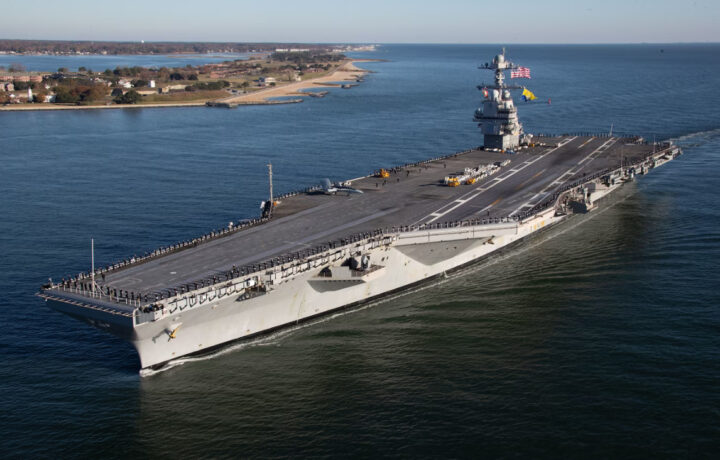The United States Navy’s USS Gerald R. Ford (CVN-78) is the most advanced aircraft carrier built to date, while it is also the largest and notably the most expensive. In fact, tally for the total cost of the nuclear-powered supercarrier – the lead vessel of a new class of warships – is $13.3 billion, nearly 30% greater than initial estimates.
The flattop’s first deployment was delayed by a need to complete work on its weapons elevators and correct other technical problems aboard the ship. The first deployment last year – a two-month “service-retained deployment” in Atlantic waters that served as an operational stress test – began on October 4, 2022, more than five years after the ship was commissioned into service, and ended on November 26, 2022.
However, the $13.3 billion doesn’t include the operational costs of the warship, which is expected to remain in service for around 50 years – including a mid-life refueling. The good news for the U.S. Navy, and not to mention the U.S. taxpayer, is that CVN-78 may cost less over its service life than planned due to reduced maintenance costs.
Capt. Brian Metcalf, a program manager, explained at the American Society of Naval Engineers conference in Arlington, VA, this week that the U.S. Navy can expect to save about $5 billion per ship than the preceding Nimitz-class over the life of each vessel.
The service had previously set a target of $4 billion per ship in savings.
“The biggest difference between the target and what we’re witnessing is the maintenance that Ford has gone through so far,” Captain Metcalf told Defense News. “I will caveat that to say, we’re 2% or less into the 500 years of aircraft carriers that we’re going to have with the Ford class.”
The savings in operations and maintenance could free up money for other readiness and acquisition needs.
Next Ford-class Running Late
The second carrier of the class, the USS John F. Kennedy (CVN-79) is now more than 90% complete. The vessel was commissioned on December 7, 2019 and is currently fitting out, with a scheduled delivery in 2025 – a year behind the planned 2024 handover the U.S. Navy.
In 2020, the U.S. Navy had switched from pursuing a dual-phase delivery for CVN-79 to a single-phase delivery. That decision added two years of work to the carrier.
The delivery date was pushed back from June of next year so that the Navy could alter the ship’s Post Shakedown Availability (PSA) and perform more work during construction, according to the service’s Fiscal Year 2024 (FY24) budget documents.
“The Navy is implementing a strategy to pull baseline work from the PSA into the construction period in order to provide more capability at ship delivery,” the service’s shipbuilding budget book noted.
However, the altered schedule would also ensure Kennedy is ready to deploy to the Indo-Pacific, according to the service.
“This approach will prepare CVN-79 as the first Ford class aircraft carrier to operate in the Indo-Pacific region and decrease the amount of time CVN-79 would be required to be at the shipyard after ship delivery to conduct the PSA,” the documents added. “CVN 79’s PSA will align to a traditional period of resolving discrepancies discovered during trials. The revised strategy maintains the overall ‘ready for deployment workups’ milestone for CVN 79.”
Possible Savings With Future Carriers
The next carrier in line – the future USS Enterprise (CVN-80) is now about 35% complete, and Metcalf suggested it was “starting to look like a ship now.”
The U.S. Navy has also explored plans to buy the next two carriers – the future CVN-82 and CVN-83 respectively – in a two-ship contract.
Going Digital
The Ford-class of carriers relies on greater automation, and the vessels were designed to operate effectively with nearly 700 fewer members than the Nimitz-class.
The automation isn’t the only digital improvement that could cut costs.
A Congressional Research Service report noted that while the Ford-class was designed in a digital 3D environment, rather than traditional blueprint drawings, the associated step-by-step digital work instructions weren’t ready for CVN-78 and CVN-79. As a result, USS Gerald R. Ford and USS John F. Kennedy were still built with paper drawings derived from the digital plans.
Starting with USS Enterprise (CVN-80), workers at the shipyard have been using laptops with digital work instructions for each step, with 3D images that can be enlarged and rotated. That is already streamlining the process for workers, and could be another step in reducing the production costs.




